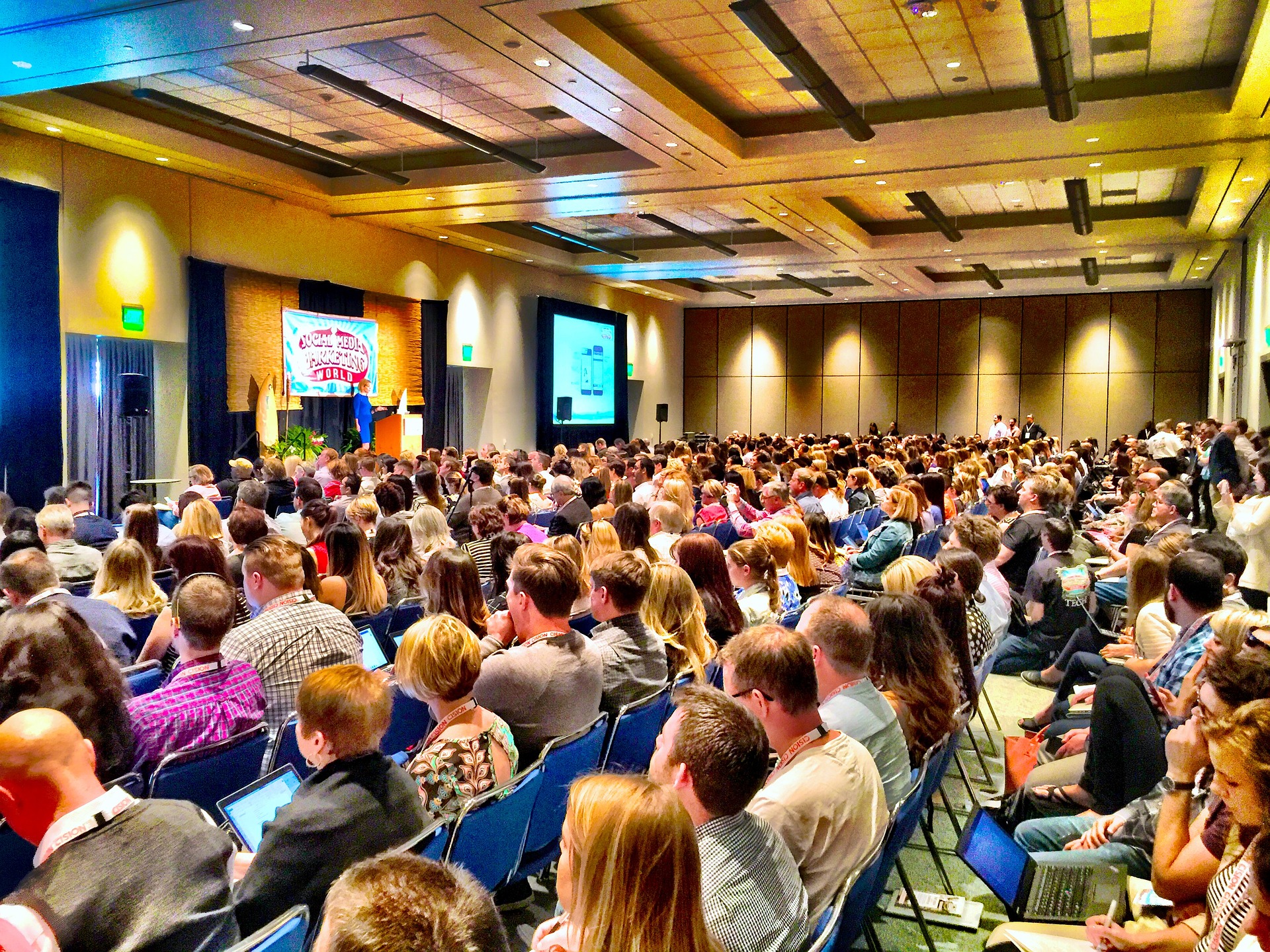The world has changed. Maybe Galadriel smells it in the air (and tastes it in the water...), but event professionals face the changes in their unceasing efforts to deliver the perfect experience. Day by day. And even though technology has a nasty habit of getting you distracted (you get like 12 emails, 8 phone calls and 37 FB/Twitter notifications per hour), it also offers a lot of help when organizing an event. So let’s see how technology changed the event management game:
Access to real-time data
“Un homme averti en vaut deux” (an informed man is worth two), claims a French saying. And maybe the math is not quite right but we all know the importance of information when planning an event. Luckily today’s apps let you know every minute how many tickets you’ve sold and to whom (through the right tools, such as Oveit’s event registration software ).
For example most of the seats are empty 10 minutes before the posted start time? Verify the app and see how many people checked in. If 80% of the ticket holders already checked in (maybe they are in the lobby) you’ll only have to deal with a small delay, not a fiasco. Using an event management software keeps you well informed.
Yes, we mind waiting
Time is money (for everyone). Professor Richard Larson, from MIT, has estimated that Americans spend about 2 years of their lives waiting in lines. Even sadder is that “often the psychology of queuing is more important than the statistics of the wait itself” and people tend to overestimate the waiting time by about 36%. Today you can use an event management app that allows you to use any smartphone for ticket scanning and registration, making the queues go a lot faster (you can extend the scanning points with as many as you want; all you need is a smartphone).
Social media helps you meet billions
There was a time when word of mouth was the only way to communicate your event. Today, 3 of the most important social media platforms gather more than 2 billion unique monthly visitors; modern technology gives you the opportunity to market the exact demographics that you want. Although this is not the answer to all of your prayers it clearly makes it a lot easier when you want to make yourself heard.
Keep everyone engaged
People spend around 2 hours a day touching their smartphone’s screen and 85% of that time is, in fact, spent using applications. So we can understand why more and more #eventprofs are using applications when it comes to engaging participants. See for example TONOMAT, an app that allows everyone to be the DJ at your party, helping even the shyest to make himself/herself heard (via his/her favorite band).
You should always follow up your leads
62% of the leads are not followed up after an event. I really hope this is not the case for you. You invest a lot of time and money in planning your event and you should interact with everyone who registered. If someone spent the time to register for your event it means that they are interested in what you have to offer (not to mention those that actually attend it). So keep in touch with them!
Modern-day apps let you know who arrived and who didn’t, so you can follow up by segmenting your audience with different messages. Here are some examples:
“Thank you for attending …”
“Sorry you didn’t made it, here is what…”
Let the world see you shine. Live
40% of world population has access to the internet. Maybe the venue has a capacity of only 500 people, but today you can sell an unlimited no. of tickets for an online experience (live streaming is way cheaper than it was a few years ago). So, just like a big football match, your event can also be watched by millions for a few bucks (ok, maybe not millions, but you get the picture). You can sell live online access for a small price and/or you can even ensure a VR experience for those who cannot attend in person. (this is not something new but today the technological leaps make it possible for anyone to broadcast an event)
Replace cash payments to grow the order value
Carrying a lot of cash is not really fun (especially in crowded places where they sell alcohol). Use NFC technology to replace cash payments and you will have:
- No more pickpocketing
- Less queueing
- 0 cash loss
- 30% increased order value
- Happier attendees
Oh, and by the way…
“It is not the strongest or the most intelligent who will survive but those who can best manage change.” Charles Darwin
Further reading:
- http://www.preoday.com/blog/the-changing-scene-of-consumer-experience-in-festivals/
- http://www.nytimes.com/2012/08/19/opinion/sunday/why-waiting-in-line-is-torture.html
- http://www.ebizmba.com/articles/social-networking-websites
- http://blog.mobilosoft.com/blog/e-tickets-vs-m-tickets-difference-and-benefits-for-consumers
- http://www.marketingdonut.co.uk/exhibitions-and-events/exhibiting/planning-your-follow-up-after-an-event

